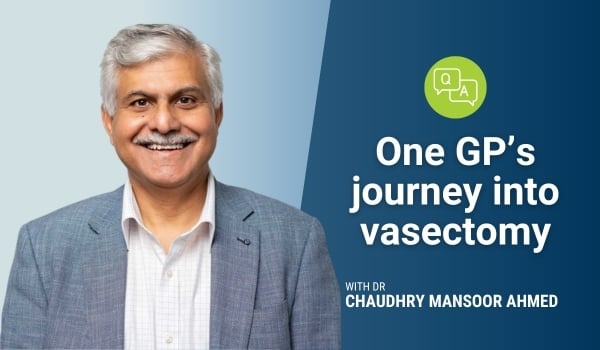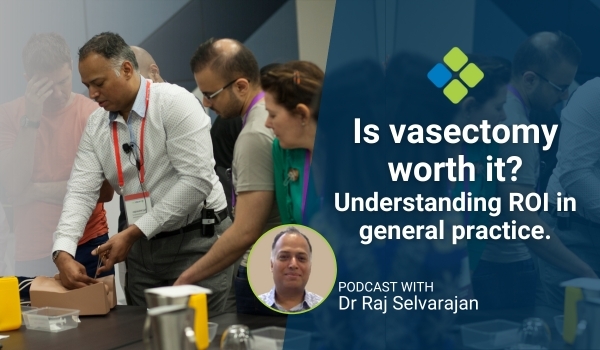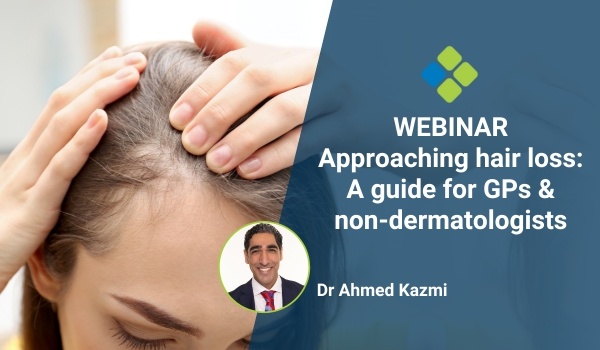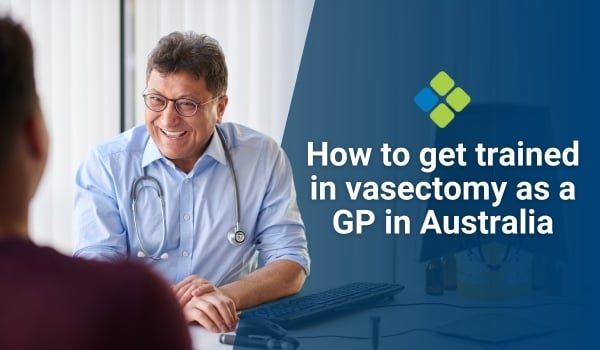One GP's journey into vasectomy
Read how Dr Chaudhry Mansoor Ahmed added non-scalpel vasectomy to his practice, from hands-on training to starting to deliver the new service to patients.

HealthCert Education
Dr Chaudhry Mansoor Ahmed is a GP with a strong procedural background and a passion for surgical care. In this Q&A, he shares his journey into offering the no-scalpel vasectomy procedure (from seeking hands-on training to overcoming unexpected hurdles) and reflects on what it has added to his day-to-day practice.
This is an insightful read for any GP considering expanding their procedural scope.
Why did you decide to add vasectomy to your clinical scope?
 I previously worked overseas as an orthopaedic surgeon. Since starting my training as a GP registrar, I had always planned to shift fully into procedural work after obtaining my fellowship. Vasectomy was one of the procedures I had in mind to offer my community. I reached out to several providers in New South Wales and Victoria for hands-on training opportunities, but no one was willing to take me on.
I previously worked overseas as an orthopaedic surgeon. Since starting my training as a GP registrar, I had always planned to shift fully into procedural work after obtaining my fellowship. Vasectomy was one of the procedures I had in mind to offer my community. I reached out to several providers in New South Wales and Victoria for hands-on training opportunities, but no one was willing to take me on.
Eventually, I came across the HealthCert Advanced Workshop of Non-Scalpel Vasectomy and was introduced to the course instructor Dr Raj Selvarajan. After completing the initial face-to-face workshop, I continued on to do a placement at Dr Selvarajan's clinic.
What was your experience like during the HealthCert workshop?
The Advanced Workshop of Non-Scalpel Vasectomy was a good stepping stone to learn more about vasectomy. However, for someone who hasn’t actually performed a vasectomy before, the course alone isn’t enough to begin practising independently, even if you're an experienced surgeon. That's why I also did the placement.
How did the placement with Dr Raj Selvarajan support your learning and confidence?
I travelled to Queensland four times and spent several days with Dr Selvarajan over a three-month period. This technique requires patience and perseverance to master. It's not possible to learn it without a mentor guiding you through every step. At first, I was frustrated because I couldn’t feel or present the vas deferens to the surface. Dr Selvarajan supported me emotionally and allowed me to progress at my own pace. His mentoring struck the right balance between helping me build the skill and ensuring patient safety. We debriefed after each case, and he helped me overcome each hurdle. The case volume was manageable, allowing me ample opportunity to practise and improve. Over time, the number of cases I was exposed to helped me reach the level of proficiency I was aiming for.
How difficult was it to start offering vasectomy in your own practice?
By the end of my training, I had gone through the process repeatedly, from counselling and patient preparation to setting up equipment, administering local anaesthetic, and performing the procedure itself. When I began offering vasectomies independently at my clinic, I didn’t encounter any major issues. It just felt like another day at work.
How do patients respond to having this service available in general practice?
Vasectomies aren't available at every practice, so patients are definitely happy to have access to it.
Have you seen a return on investment clinically, financially, or professionally?
For me, it feels more like a “mission accomplished” than a financial venture. While the financial return does come, it takes time to break even.
What do you wish you had known before starting out?
During training, I realised it would take time to become proficient. I didn’t begin practising independently until I was truly confident, which only happened after my third visit to Dr Selvarajan's practice. Until then, I kept returning for more training. That meant travel costs and lost income from not working which was a real challenge for me. But I couldn’t leave the training halfway. There were moments of frustration, and I admit I didn’t expect some of the hurdles I encountered. This technique is different from many others I’ve done in my surgical career. A lot of it is done by feel rather than sight, which makes it uniquely challenging.
Do you have one piece of advice for a GP thinking about training in vasectomy?
There’s the financial commitment, and you will face many challenges even if you already have surgical experience. Don’t pursue it unless you’re genuinely passionate about learning the skill. It’s not just about increasing your revenue.
Has offering vasectomy changed your day-to-day practice or career outlook?
I want to provide surgical services exclusively to my patients. I already perform minor procedures like skin excisions, surgical flaps, and circumcisions for both infants and adults. Learning vasectomy has completed the procedural offering I can deliver as a GP.
- Dr Chaudhry Mansoor Ahmed
Next steps in your learning journey
Want to upskill in the no-scalpel vasectomy method?
Start with HealthCert Education’s Advanced Workshop of Non-Scalpel Vasectomy to build your foundational skills. Then round-out your hands-on vasectomy training with a clinical placement at Dr Raj Selvarajan’s clinic.
🎓 About HealthCert's Advanced Workshop of Non-Scalpel Vasectomy
Gain practical experience in the foundations of non-scalpel vasectomy procedures. The workshop is a smart, flexible, and career-enriching opportunity for GPs in Australia, with workshops available three times a year in Brisbane, Sydney, and Melbourne.
If you're looking to enhance your procedural scope or offer more complete care for male patients, this weekend session can help you make vasectomy a valuable part of your clinical offering. ➡️ Explore program now >
Or learn how to get trained in vasectomy as a GP in Australia

 1800 867 1390
1800 867 1390





